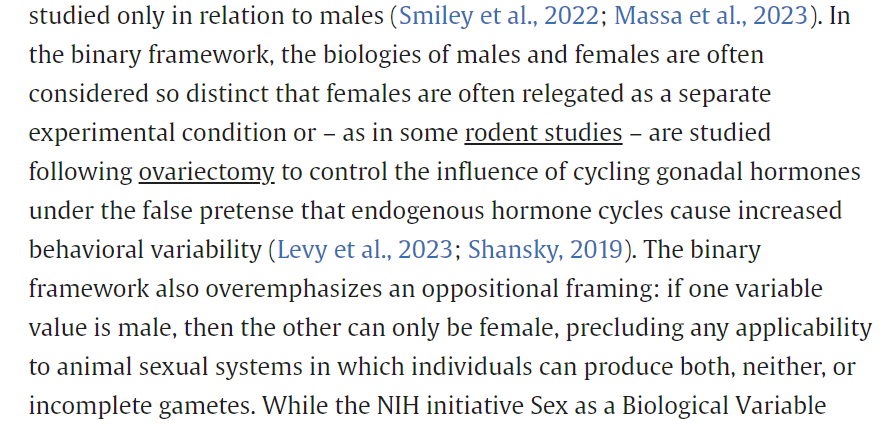It’s Time for Science to Move Past the Sex Binary
A paper in the journal Hormones and Behavior calls on researchers to move beyond the simplistic reliance on binary sex, explaining “Univariate, binary sex is insufficient for explaining sex diversity in nature.”
by Evan Urquhart
Depending on your perspective, moving beyond the simplistic binary of two biological sexes, male and female, is either the latest woke outrage that has you frothing and spitting mad at your computer or else a useful rhetorical rejoinder to transphobes who insist that trans identities are invalid. But, how would moving beyond two rigid binary sexes work within a rigorous scientific framework? Would it undermine the foundations of truth itself, or encourage researchers to advance the frontiers of human knowledge? A paper published in the January issue of the journal Hormones and Biology calls on biologists to ditch the binary, for science!
Any seventh-grade biology student could tell you every animal has just two sexes: male and female. And, any college undergrad (or high school debate team champion) could explain how nature is really quite a bit more complicated. Some animals change sex during their life cycle, some are hermaphrodites, some reproduce asexually, and all animals have some individuals that don’t quite fit a standard male or female template.
In research that observes or collects a lot of specimens and then divides by sex there’s typically an “other” or “unknown” category, a catch-all for any organism that couldn’t easily be classified by the researchers. (Sometimes the category has a special name, with “female, male, and false male” from mosquito research being a fun one.)
The paper, Sex diversity in the 21st century: Concepts, frameworks, and approaches for the future of neuroendocrinology, by lead author Kristina O. Smiley and several co-authors, seeks to push a step beyond this “male, female, other” framework. It’s a long, densely technical paper, but the heart of the matter is that Smiley et al. feel researchers are simplifying too much when it comes to sex classification. Sex in animals operates on multiple, interconnected levels, from chromosomes, to chemistry, to gametes, to behavior. At each level there are exceptions or in-between states which, the authors argue, researchers have grown too comfortable skipping over or ignoring, leading to simplifications that may once have served the purpose of getting on with things, but today may obfuscate what’s actually going on with the organism (or population, or behavior, or what have you) under study.
Take, for example, rat behavior. Rats are the most studied mammal, and it’s well known that male rats engage in mounting behavior, while female rats engage in lordosis behavior (presenting their backside). Except, of course, in the messy real world, this dichotomy between mounting vs lordosis behavior in male and female rats is not observed. Some male rats present their backsides. Some female rats mount other rats. Understanding this behavior as a binary sex-based difference (or a sex-difference with exceptions), gets in the way of probing deeply enough to fully understand these behaviors and what gives rise to them.
The authors propose a framework to break down the aspects of sex-difference that are being studied, while recognizing other aspects that may have influence but fall outside the scope of the particular study. They also stress the importance of paying attention to things like an animals age, its point in the reproductive cycle, how it’s housed (alone, paired, in a single sex group, in a mixed-sex group), and other variables. All of these factors, and more, can have an influence on things scientists have typically forced into the binary male/female division.
The paper also briefly talks about the social benefits of having less rigidly binary thinking to humans, particularly the transgender and nonbinary community, but that is not the focus. This isn’t a language-based argument that researchers should stop referring to pregnant rats as female and instead call them “pregnant rodents.” Instead, it’s a practical application of the newly invigorated conversation over whether sex is binary into a research context.
Science isn’t about learning a set of facts in grade school and forgetting them forever, it’s an ever-changing adventure to push back the shroud of ignorance, step by tiny, painful step. Research using a male/female or male/female/other framework has got us this far, but what these scientists are proposing is that it’s time to move beyond that and ask about the complexities contained within the mysterious territory labeled “other.”



